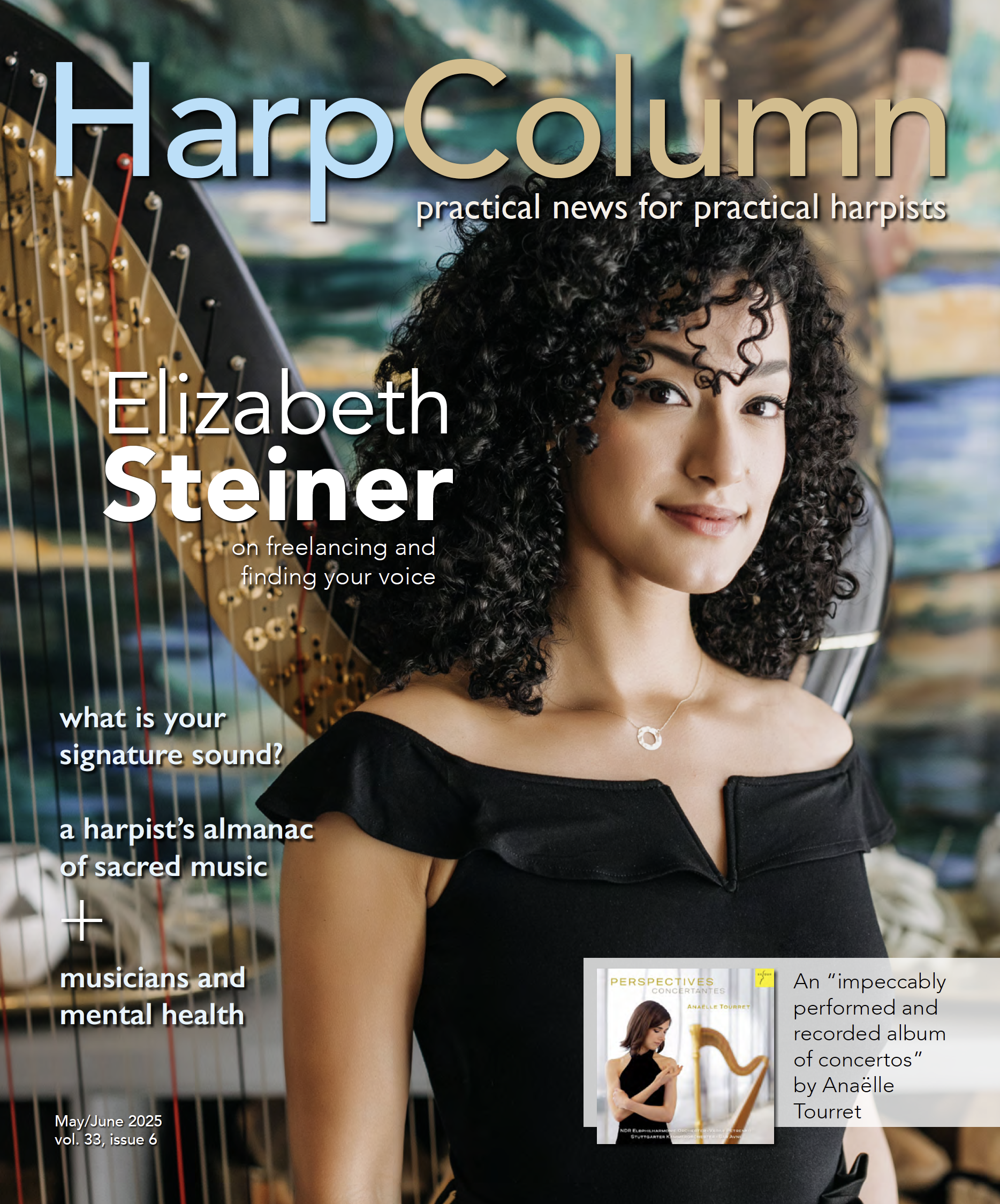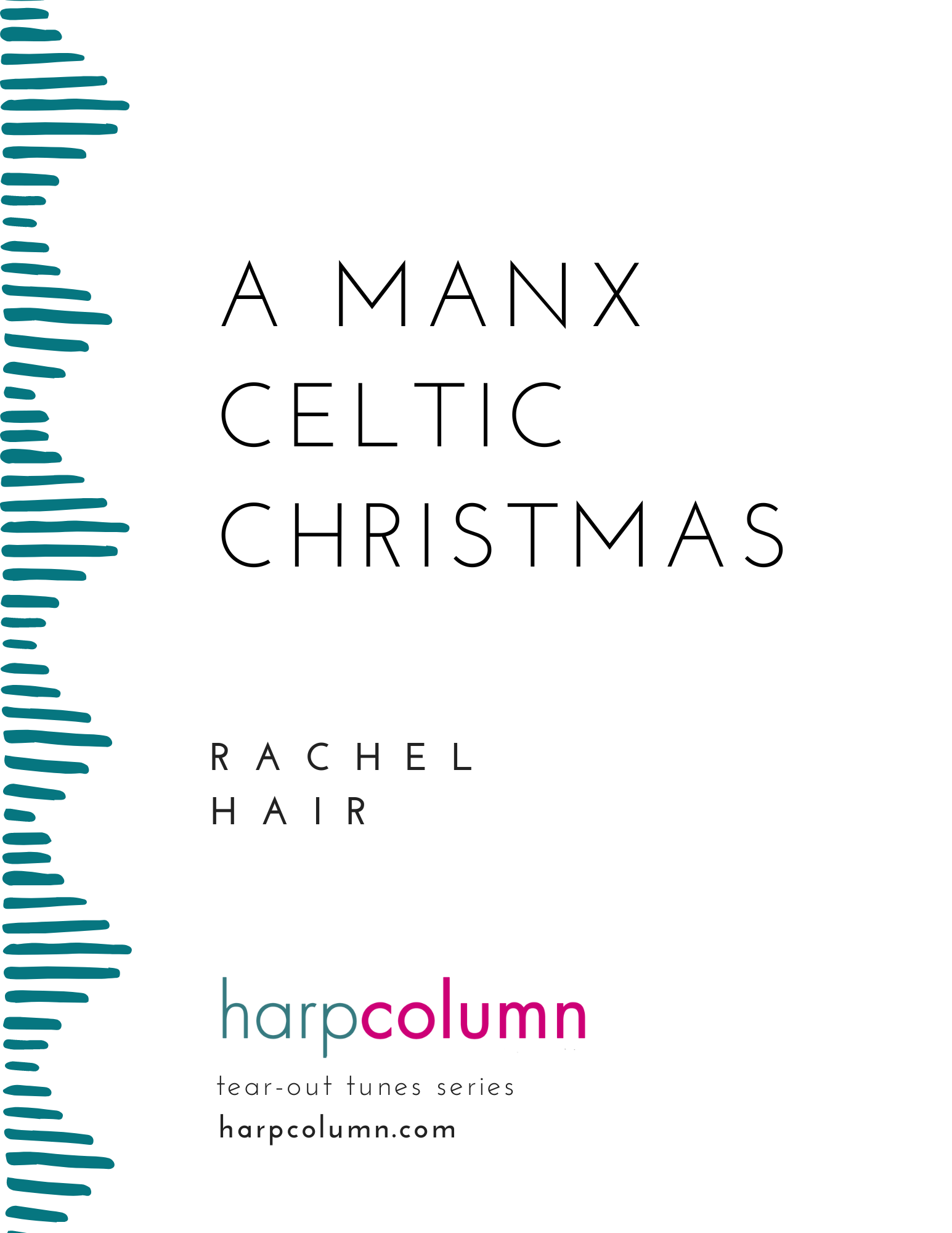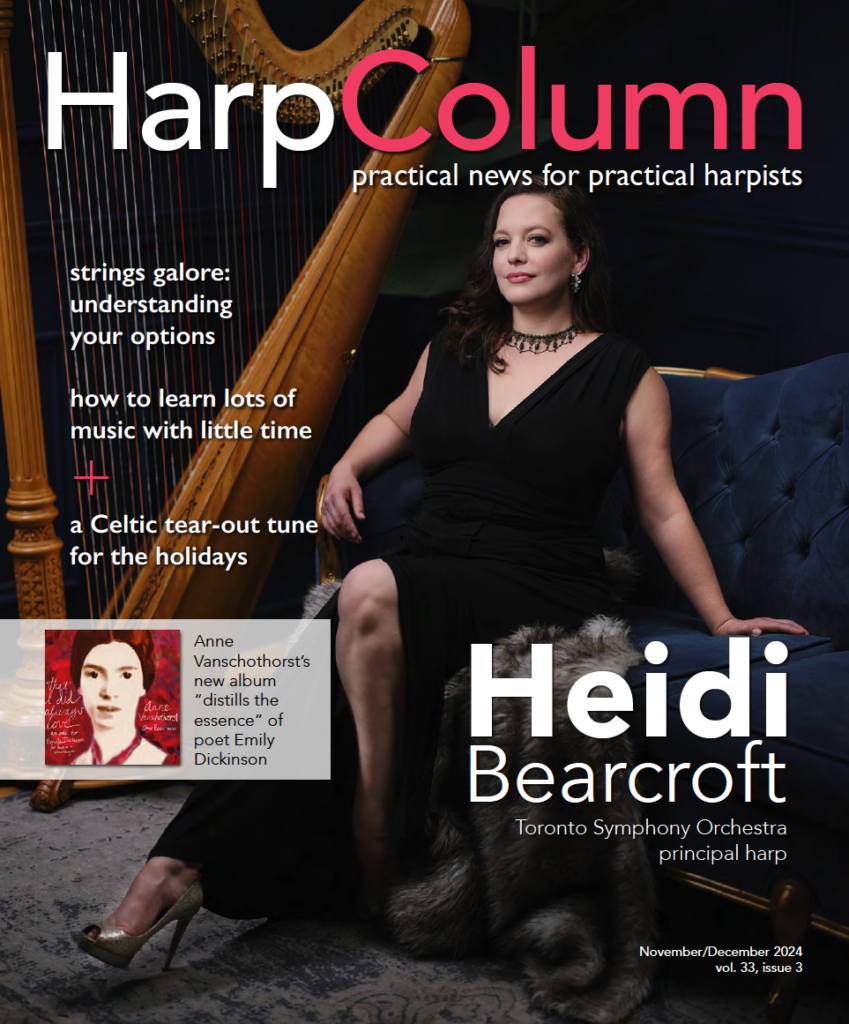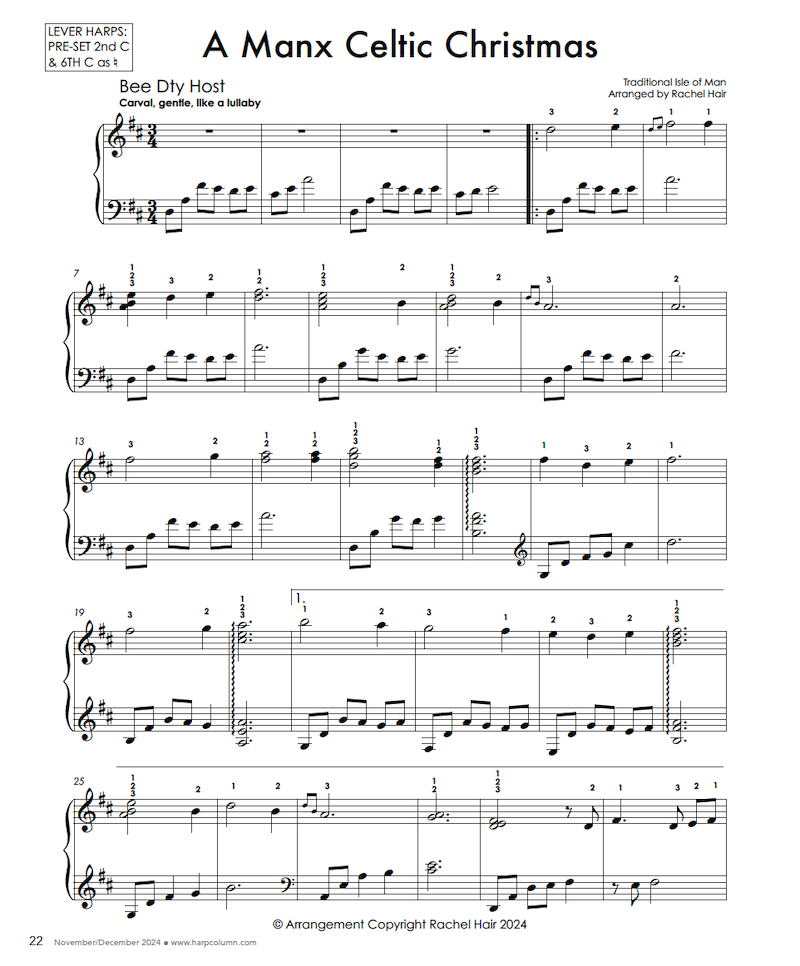
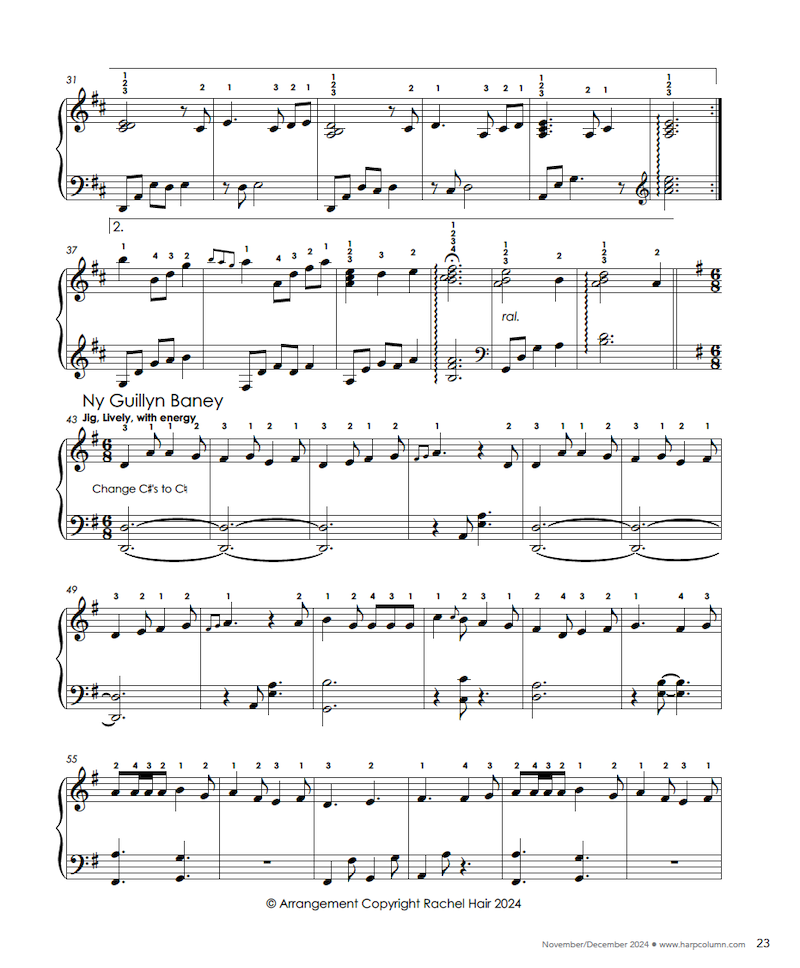
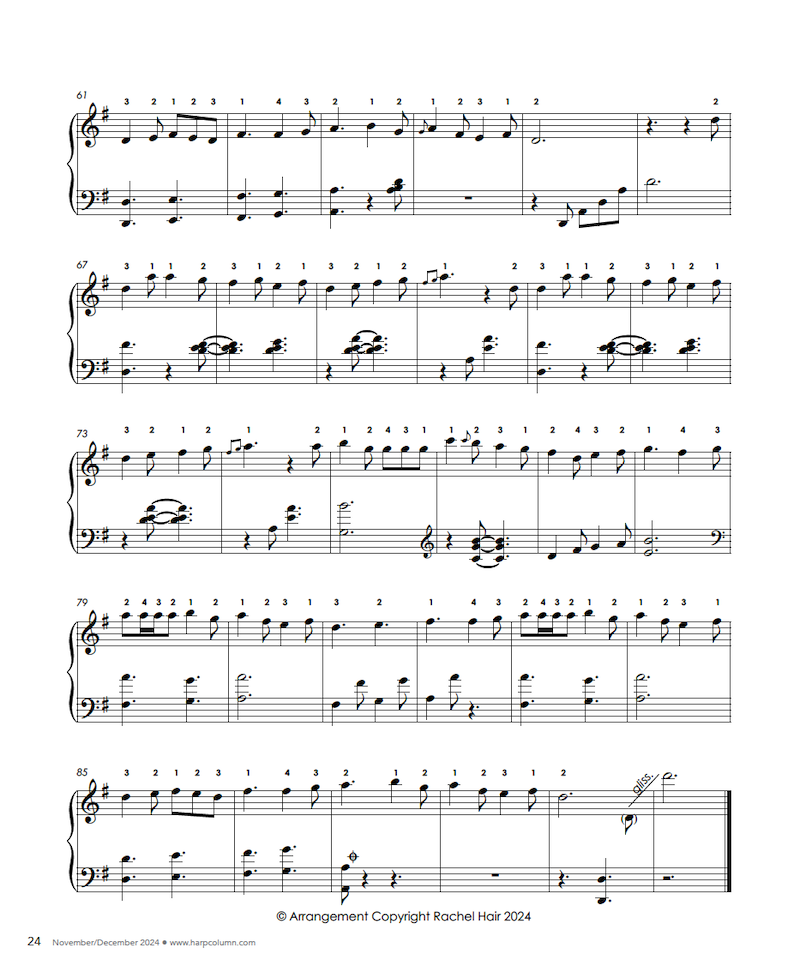
Download this issue to get this tune now!
Each installment of our Tear-Out Tunes series features a new piece written by one of the best harpist-composer-arrangers in the business. Each composer will tell you a little bit about their piece, and also give you some helpful tips for learning it and getting the most out of the experience. The new piece (on the following pages) is yours to keep. We even put it right in the middle of the magazine so you can tear out the whole sheet and put your new tune on your music stand.
I have the pleasure of journeying monthly to the beautiful Isle of Man to teach Manx Celtic harp. My love affair with the island began with a man from Man, and during the early days of our long distance relationship, word soon spread that a harp player was visiting. Fast forward 13 years, and the man is now my husband, and I’m now employed for three days every month “on the rock” to teach 24 youngsters the traditional dance tunes and airs from their island.
What is the Isle of Man?
The Isle of Man is the smallest of the Celtic nations and is situated in the Irish Sea, between Scotland, Ireland, Wales, and England. It is approximately 33 miles long and 13 miles wide, with rugged coastlines, medieval castles, and a wonderful cultural heritage.
Manx music is best described by its geographical position, so to many sounds a bit Irish or Scottish. Whilst there is no historical evidence of a harp tradition on the island, it’s been thrilling to watch the instrument undergo somewhat of a revival, with many youngsters learning, new teachers graduating, and harps performing at concerts, sessions, and even in ceili dance bands.
The foolish fortnight
They take the holiday season seriously on the Isle of Man, where it’s known as the “Foolish Fortnight.” Traditionally all work stops on December 21, and celebrations last until the twelfth night, January 6. These two weeks are a socializing marathon, accompanied by music and song. There are music sessions, Christmas Day delights, St. Stephen Day traditions such as the “Hunt the Wren” community street dancing, the all-island north versus south cammag match (hockey played with anything that resembles a stick), New Year’s Eve parties, the mummers street plays, and the singing of haunting Manx carvals on Oie’ll Verree (old Christmas Eve, celebrated January 5).
Manx Christmas music
I’ve arranged two contrasting songs in a set to give you a little bit of a flavor of a Manx Celtic Christmas. “Bee Dty Host” (Hush Thee) is a carval, sung in the Manx Gaelic language. Carvals were traditionally sung unaccompanied in churches around the island on old Christmas Eve, Oie’ll Verree, on January 5. “Ny Guillyn Baney” is a lively Christmas song, taking the form of a jig, and is usually heard sung at the end of the Whiteboys Mummers play. This street theater has been performed by locals throughout the island since the 19th century. Named after their unusual costumes, the Whiteboys plays don’t follow a strict script, but the story will always include saints, a fight, a death, a resurrection, and a happy ending.
Arranging traditional tunes for harp
I don’t follow any harmony rules or chordal patterns when arranging traditional tunes on harp. I’ve learned over the years to trust my ear, and many of my arrangements have been influenced by playing the tunes with friends in folk sessions.
I feel that it’s important to allow space, particularly in airs and slower songs. Treat “Bee Dty Host” as a lullaby—breathe after the phrases, and put your own feeling and emotion into the tune.
I love using syncopation in faster dance tunes. I’ve developed this style from listening and playing with guitar players who describe syncopated chords as being “pushed,” meaning they come before the beat. I’ve used this idea in “Ny Guillyn Baney.”
Making it your own
Traditional music features lots of melodic repetition, and I also use repetition in my arranging, varying things slightly on repeats, as our ears like familiarity. Each song has several verses, so why not try to arrange each for a third time? Take what I’ve done and vary it. Change just a few chords—harmonically, rhythmically, or by their voicing—and you’ll soon be on your way to making your arrangement.
Technical talk
While “Bee Dty Host” is relatively straightforward, there are some techniques I’d like to highlight in “Ny Guillyn Baney.”
Traditional harpists love to ornament tunes, and one decoration I use in fast tunes is what I call an a birl—three of the same repeated fast notes. I play these using fingering 4-3-2, and where possible I steady my hand by anchoring my thumb on the thumb note played after them.
I use a flat left hand technique when playing adjacent octaves and tenths and, most prominently, when playing adjacent split octaves.
Place your left hand flat against the strings, like you’re patting the strings, and damp the first chord before sliding up or down to grab the next chord. This isn’t damping for effect (étouffé) but damping at the last moment so the harmony doesn’t interrupt the next chord. I call this technique “considerate damping.”
Fingering is just a suggestion, and I included what works best for me in these melodies. I feel that dynamics in traditional music should be expressed by the player, and they will be forever changing, so please discover your own.
I hope you enjoy playing these tunes and make them part of your holiday or year-round repertoire. If you’d like to learn some more Manx music, the website manxmusic.com has lots of free melodies to download, many of which are just waiting to be arranged by you for harp! •




